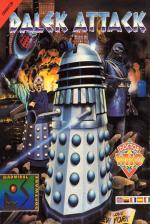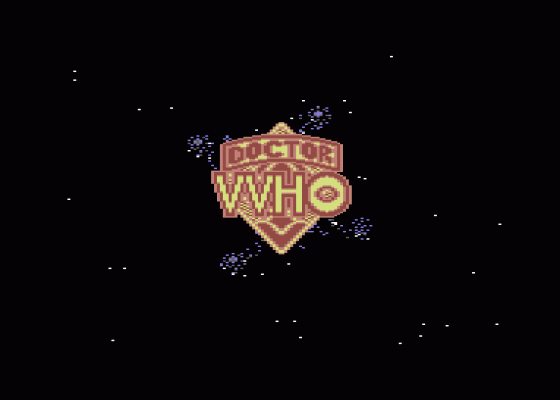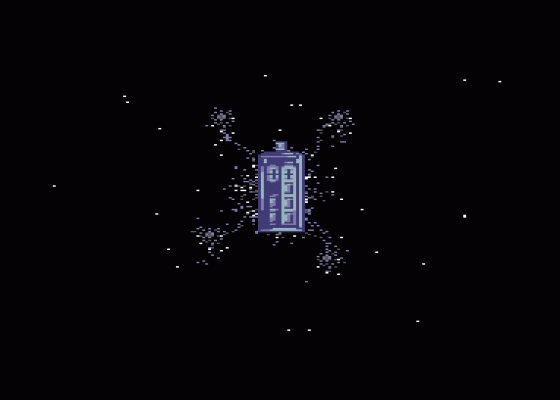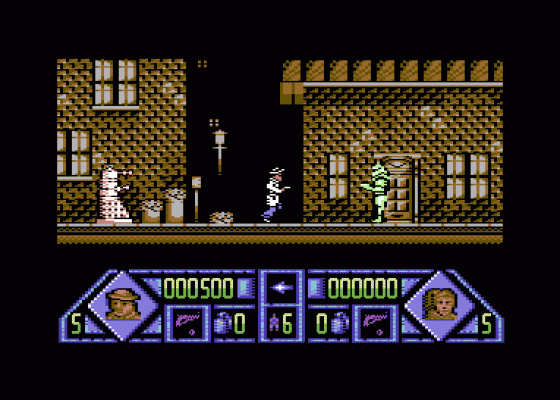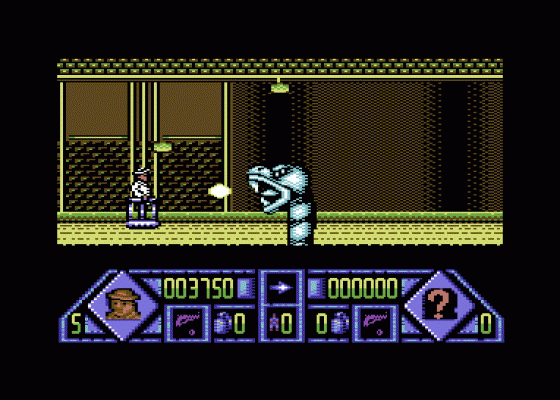
Commodore Format
 1st February 1993
1st February 1993
Categories: Review: Software
Publisher: Admiral
Machine: Commodore 64/128
Published in Commodore Format #29
Dalek Attack (Admiral)
Let's be honest, Doctor Who was always tacky. With a budget the size of a student grant it had wobbly sets, dodgy effects and squeezy bottle spaceships. Take the Daleks, for example. Their creator, Terry Nation, claims they were inspired by the Georgian State Dancers prancing about in long skirts; it looks more like they were the result of a BBC designer emptying a dustbin. "I bet if I stuck this egg whisk and sink plunger on the side of that swing bin," he must have thought, "I'd have a monster that'll have kids hiding behind the sofa for three decades."
And he was almost right - all it needed was the addition of a few dozen sawn-in-half ballcocks, a ping-pong ball and a pair of Morris Traveller indicators.
Dalek Attack certainly remains true to this hastily-thrown-together philosophy - it looks and plays like it was programmed in a mad rush to get it completed before the electricity meter ran out! However, the television series also had a sense of fun, a self-mocking awareness of its own limitations and often some inventive and original ideas. Dalek Attack, erm, doesn't.
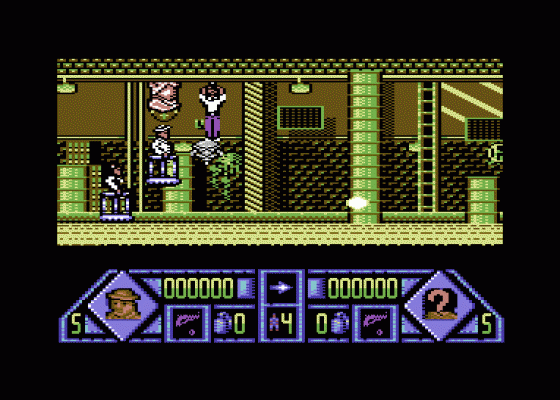
The game involves the Daleks trying to destroy the Earth's ozone layer using pods hidden in major cities - London, Tokyo, Paris and New York. There are six levels, the first two in London, one each in the other three cities, and a final one on Skaro whers Davros must be captured. You play the Doctor - the Sylvester McCoy version - while in two-player mode, the second player controls Ace. It's a platform shoot-'em-up affair with some fairly large levels, in which the Doctor has to rescue hostages, collect weapons and blast away at Daleks, Ogrons, Robomen and anything else that moves.
Blasting? Shoot-'em-up? Weapons? This doesn't sound very Doctor Who-like. You're right, it isn't. In the television series, the Doctor would solve problems using his vast intellect. Dalek Attack, however, is a licence-by-numbers. The Doctor Who elements have been grafted onto a bog-standard platformer. With a few minor changes to the graphics, it could just as easily have been a Blake's Seven, Star Wars or even Last Of The Mohicans game.
The graphics are pretty dire. With a proliferation of stagnant pond greens and browns, the levels ail look pretty much the same and the Daleks flip around like they're made of cardboard. The backgrounds are so poor that you spend the first few minutes on each level working out what's supposed to be solid and what's just shading, while the collision detection is so bad often you don't know whether you've found a secret platform or if it's a "hidden feature".
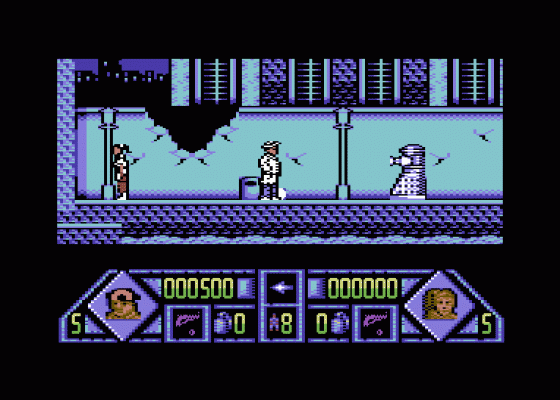
The game also has a weird sense of geography. In the Paris level, for example, you go up the Notre Dame, go in through (what I think is) a window, go up a few flights of stairs... and emerge at street level. This is just downright annoying when you're trying to find your way around.
Dalek Attack isn't easy. Even with five lives (a Time Lord actually has thirteen, but I suppose that would be a few too many) you'll soon become very familiar with the Game Over message. It doesn't help that you can walk through a door straight into the path of a Dalek and be shot; there's no way you can check beforehand.
You want progression? You ain't got it. Apart from the first level - a fairly easy flight through the sewers on hover pads - all the others play exactly the same, requiring the same level of skill (and luck). It's a case of play one and you've played 'em all.
This is strictly one for the die-hard fans only, and they deserve better than this. Sheesh, even El Dorado fans deserve better than this.
Good Points
- It's cheap and tacky - just like the program.
Bad Points
- Nearly all the levels look and play exactly the same.
- The Daleks seem to be made from cardboard.
- The controls are irritatingly muddy.
- Frankly, a licence of the Test Card couldn't be more tedious.
Other Reviews Of Dalek Attack For The Commodore 64/128
Dalek Attack (Admiral)
Chris 'Tardis Trousers' Hayward cares more about nurses than doctors, but the thought of fighting laser-wielding dustbins is enough to make anyone grab a sink plunger and become a Timelord.

